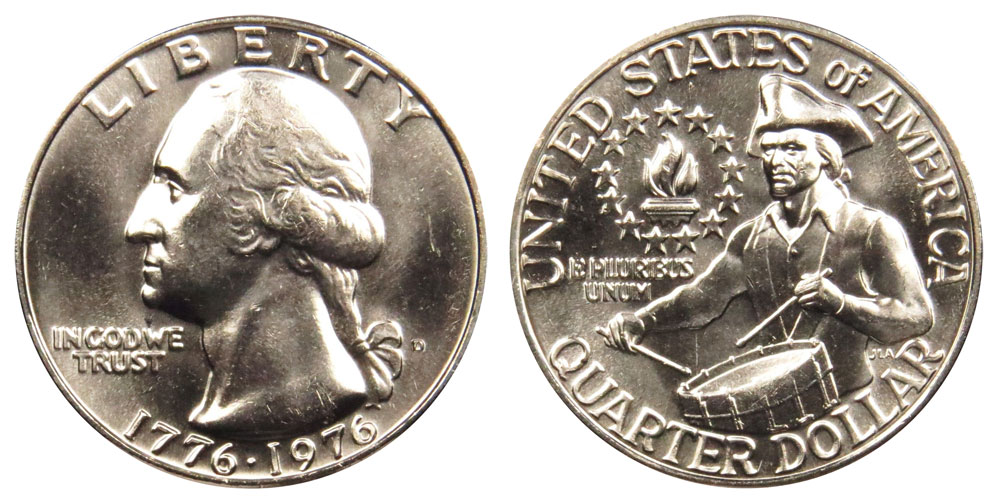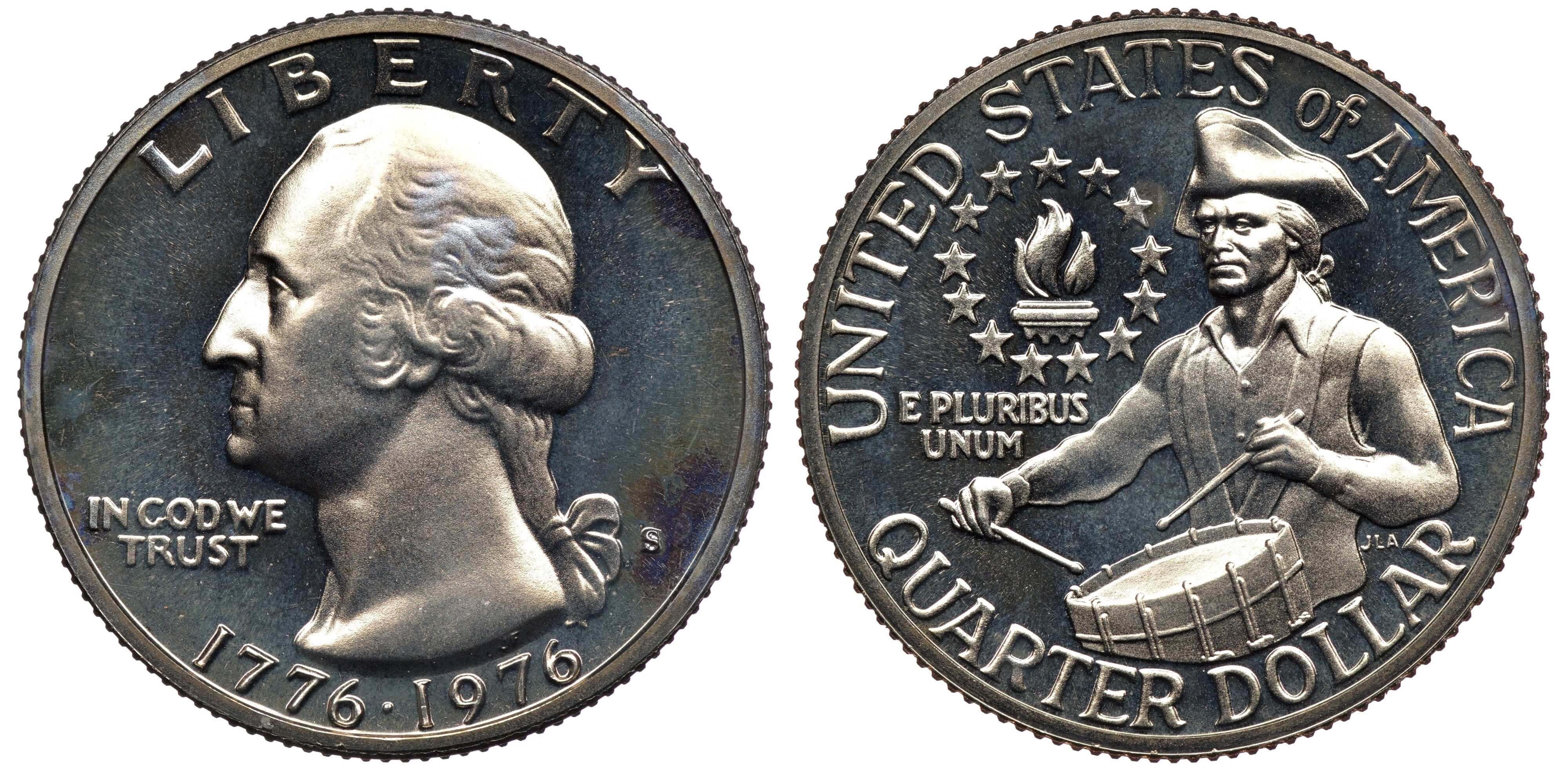1776–1976 Bicentennial Quarter Value and Price Chart
If you have a Washington quarter with the date "1776–1976" on it, it is a Bicentennial quarter. Bicentennial quarters were made to commemorate America's 200th birthday. They feature a special reverse design and the date "1776–1976" in honor of the occasion.
How Much Each Bicentennial Quarter Is Worth (Chart)
Most Bicentennial quarters are worth at least $5 in Mint State. Any piece in circulated condition is generally only worth its face value. In other words, 25 cents.
Prices below are aggregated from CDN Greysheet, NGC Coin Explorer, PCGS CoinFacts, USA CoinBook.
| Mintmark | Composition | Finish | Mintage | Price |
|---|---|---|---|---|
| Philadelphia (none) | Cupronickel clad | Uncirculated | 809,784,016 | $6 |
| Denver (D) | Cupronickel clad | Uncirculated | 860,118,839 | $6 |
| San Francisco (S) | Cupronickel clad | Proof | 7,059,099 | $4 |
| San Francisco (S) | 40% Silver | Uncirculated | 11,000,000 | $7.50 |
| San Francisco (S) | 40% Silver | Proof | 4,000,000 (included above) | $9 |
The values listed are for coins grading MS65 or PR65. Higher grades will garner a premium above the listed values.

Image: USA CoinBook
Collecting Bicentennial Quarters
The most common place you will see a 1776–1976 quarter is in pocket change. These coins were made as circulating commemoratives, much like the 50 Statehood Quarters series. Some were saved by collectors, but many people spent them as regular money (as was intended!).
Special Mint sets included 40% silver varieties of the 1976 quarter. You will see these abbreviated as "SMS" in collector's books and price guides. These silver 1976 quarters tend to be the most valuable varieties in this brief series.
In fact, millions of the silver Bicentennial quarters were melted down in 1982 and subsequent years. This reduced the number existing from the original mintage of approximately 11 million of the 40% silver SMS quarters.
More than 1.6 billion Bicentennial quarters were made in total over the two years of production.
The conventional wisdom of collecting Mint State specimens applies even more so to this series. Much of the initial production run didn't result in particularly well-struck coins. Moreover, not all of those that were collected and hoarded were properly preserved. Thus high-grade examples are somewhat more scarce.
Furthermore, these commemorative quarters are not the first thing that comes to mind when you want to buy silver coins. That may have added to their scarcity over the years.
Bicentennial Quarter Historical Background
The Bicentennial quarter was minted only in 1975 and 1976.
Production began a year early in order to discourage hoarding of the coin. This helped ensure that the public could see and enjoy the new designs regularly.
You may even come across them in pocket change today!

Bicentennial quarters were made in both 1975 and 1976
The goal of maximizing public exposure to the patriotic theme informed the decision to make the quarters circulating commemoratives. The Bicentennial quarter was one of many circulating commemorative coins issued during the 1970s.
Jack L. Ahr designed the reverse image. His design was chosen through an open contest held by the Treasury in 1973.
Both the Kennedy half dollar and Eisenhower dollar also received temporary Bicentennial reverse designs for 1976. Therefore, none of these U.S. coin denominations exist with the year-date "1975."
All three Bicentennial coins were made as circulation strikes. The "classic" U.S. commemorative coin program had been on hiatus since 1954.
Bicentennial Quarter Design

Bicentennial quarter reverse. Image: USA CoinBook
The reverse design honors America's 200th anniversary of declaring independence in 1776.
A revolutionary soldier playing a drum replaces the eagle on the reverse design. To the left of the drummer, above the inscription "E PLURIBUS UNUM," thirteen stars encircle a torch.
The dual date "1776–1976" appears on the obverse. For the same reason, the dual date was used on the circulating editions of the half dollar and $1 coin, as well.
Everything else about the obverse remains unchanged. You'll find the mintmark to the right of Washington's portrait. The national motto "IN GOD WE TRUST" is inscribed to his left. "LIBERTY" curls across the top rim.
Read more about U.S. coin values and collecting coins from the expert authors at Gainesville Coins:
1965 Quarter Value: Error Coins and History
Maya Angelou Quarter Launches American Women Coin Program
Modern Quarters Worth Money: Prices & Collecting TIps
1960s Quarters Worth Money: Collecting Advice
Simple List of 4 Rare State Quarters Worth Money

Everett Millman
Everett has been the head content writer and market analyst at Gainesville Coins since 2013. He has a background in History and is deeply interested in how gold and silver have historically fit into the financial system.
In addition to blogging, Everett's work has been featured in Reuters, CNN Business, Bloomberg Radio, TD Ameritrade Network, CoinWeek, and has been referenced by the Washington Post.
